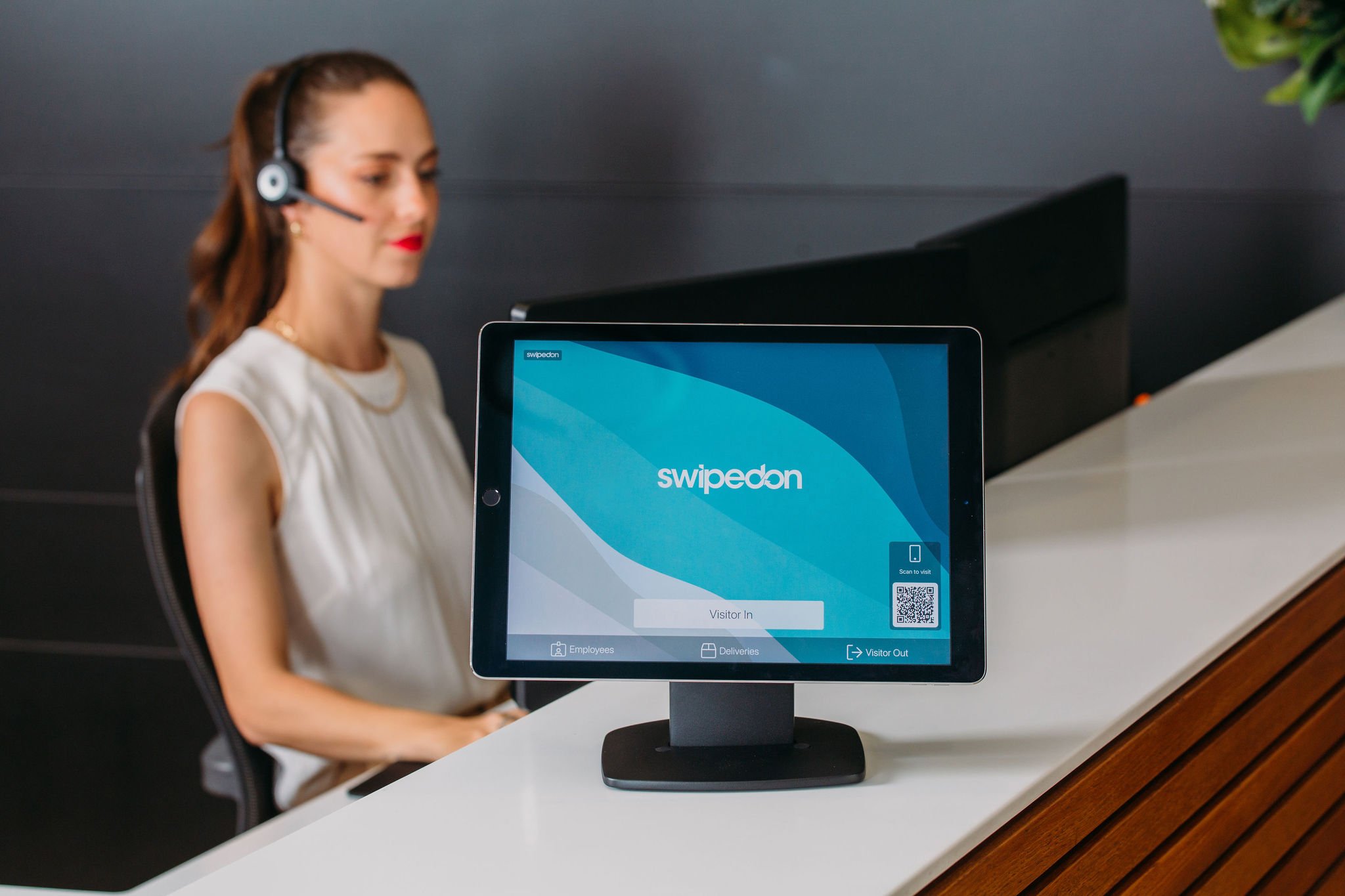5 Common Pitfalls to Avoid In Visitor check-in Processes

When you check into a medical center, you often need to provide your name, ID, and other information.
It’s no different for any other kind of business; from logistics warehouses and manufacturing facilities to corporate office buildings.
You’ll typically find a paper visitor book at reception where these details are recorded. But the new way to carry out this process safely, securely and efficiently is with a digital check-in system.
If you’re reading this article, it’s highly likely you’re using one of these processes at your workplace. Hopefully the digital check-in system, but if you’re still using a paper visitor book there’s an easy way to make the change…
We’ll tell you all about that later, but for now let’s talk about all things visitor check-in.
What is visitor check-in?
Visitor check-in is at the core of visitor management practices and is the process of recording and verifying entry into a specific location, such as an office building. It typically involves registering visitors, checking identification, and ensuring compliance while providing a safe and organized environment.
Why is a visitor check-in important?
A good visitor check-in system has a variety of benefits:
- It keeps an accurate headcount at all times, including in emergencies
- It ensures visitor information is kept private and secure
- It impresses visitors with an automated check-in process that sets the tone for their experience
Many businesses encounter challenges that make checking in visitors less efficient and secure, but technology can make it faster and more convenient than ever.
Remote and hybrid work environments have created additional challenges. According to Gallup, hybrid roles are the most common work style, with many workers in the office just two or three days each week. Having employees working from home or other locations increases the need for a proper visitor check-in process.
Let’s take a look at five challenges to visitor check-in that are common but avoidable. By understanding these pitfalls, you can create an experience that is streamlined, secure, and tailored to meet your guests' unique needs.
1. Manual Check-In Hassles
The days of tedious manual check-ins are long gone, yet some businesses still find themselves dealing with paper-based check-ins. Besides being tedious, a manual guest check-in system is time-consuming and prone to errors and inefficiencies — and it's not eco-friendly.
Manual check-ins create hassles for everyone, slowing operations and hindering the overall guest experience. Visitors often experience delays and frustration due to the time-consuming process of manually filling out paper forms.
On top of that, manual systems often compromise security. They offer limited capabilities for identity verification and access control. Also, the lack of real-time updates impacts prompt response to security concerns or emergencies, posing potential risks to the overall safety of visitors and staff.
2. Lack of Personalization
A visitor check-in app or guest check-in system should allow for personalization, yet many do not. Why does this matter for your visitors and business?
A generic approach to visitor check-in can leave guests feeling undervalued and unattended. When the process is standardized, it fails to acknowledge each visitor's distinct needs and preferences; it lacks the personal touch.
A more modern visitor check-in system allows businesses to provide personalization that goes beyond a generic sign-in sheet. Personalized greetings, tailored information, and unique identification methods offer a more welcoming and engaging experience, resulting in a streamlined check-in process and a greater sense of hospitality.
3. Security and Compliance Oversights
One of the most important aspects of the visitor check-in process is the security and compliance of your data. A visitor check-in system should incorporate stringent security measures like photo identification, access controls, and compliance checks.
Why is this so important for businesses?
Regular audits and updates help you stay ahead of evolving security threats and regulatory changes. Also, neglecting security and compliance oversights can lead to unauthorized access, data breaches, and legal issues, which can be very costly.
According to IBM’s Cost of a Data Breach Report 2023, the global average data breach cost in 2023 was $4.45 million, a 15% increase over three years. This cost encompasses things like legal fees, notification expenses, reputation damage, and revenue loss.
4. Ineffective Data Collection
Some platforms and manual methods do not adequately protect captured data or allow you to collect visitor information digitally and securely, leading to regulation and compliance issues, which are often costly to businesses.
A visitor check-in system should streamline the data collection process, securely capturing relevant, important information such as visitor names, company names, emails, and photos. This data helps gain insights that can improve operations, safety, and other areas of your business.
5. Inadequate Employee Training
When a new technology is introduced, employees may feel uncomfortable using it, especially if they're not properly trained, which can disrupt workflow and processes currently in place.
A visitor check-in system is only as effective as the individuals operating it. Inadequate employee training is a common pitfall that can result in system misuse, security breaches, and inefficiencies. Training programs and videos ensure that staff members are proficient in using the system's features.
Regular updates and refresher courses can be useful as well. These will help keep employees informed about new features, security updates, and other important releases.
Overcoming Challenges Through Visitor Check-In Systems
Identifying and navigating these visitor check-in challenges will help create a secure and streamlined check-in process. A proactive approach will help you address these pitfalls and save time and money.
Start by transitioning from manual processes to digital solutions if you haven’t done so already. Be sure your system embraces personalization, prioritizes security and compliance, and optimizes data collection. Also, invest in employee training to elevate your visitor check-in processes.
The right guest check-in system will simplify things for your administration and staff, provide a more welcoming experience, and help you prevent avoidable mistakes.
Ready to leave a lasting positive impression on visitors and employees alike? Learn more or start your free trial today!



-929560-edited-003563-edited.jpg)





 Germany - Deutsch
Germany - Deutsch